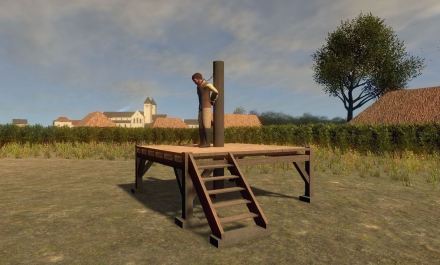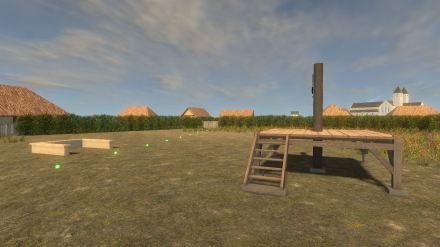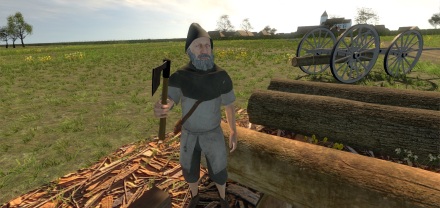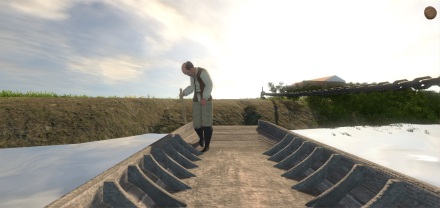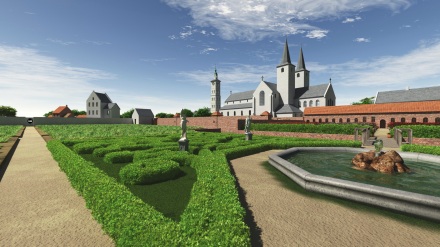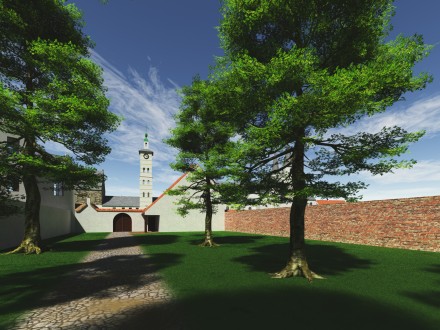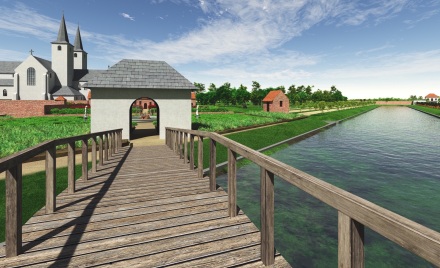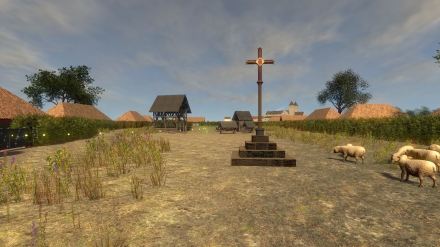
Eham 1291 has animals, such as sheep and pigs, that are roaming around automatically with AI (image: Visual Dimension bvba)
In the first version of the Ename educational game – called Ename 1290 – virtual animals where already present everywhere in the game, having some AI (artificial intelligence). One of the major improvements of the Eham 1291 game is the use of virtual humans. Although no dialogue can be started with these characters, they are influenced by the actions and decisions of the player(s) of the game. We have introduced two kinds of interaction.
The first kind are cutscenes, which in fact are small real-time movies that are played out as a result of an action of the player. For example, if the player takes a certain object that he should not take away, the player is put at the pillory for theft, resulting in game over. This not only makes the players think about the rules of a medieval world but also shows the strict social control within a medieval village and the medieval juridical system.
A guide playing this educational game with a group of children – target group for Eham 1291 are 10-12-year-olds – can expand on such aspects as other elements of justice are also visualised in the game such as the open air court benches (vierschaar).
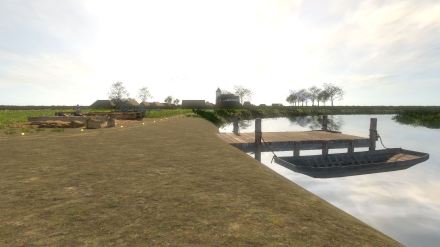
The Ename timber harbour shows in one scene the work flow from supply of tree trunks to transport of the timber by boat (image: Visual Dimension bvba)
In the game, such elements have been constructed in a very readable way. For example, in the timber harbour, the production of timber is shown from beginning to end, so the guides can explain it in a very visual way.
The second kind of interactions are changes in the behaviour of NPCs (non-player characters). For example, if you try to take the wooden beam the carpenter is finishing at the timber harbour, he will not only blame you for trying to take away this object, but also will give you extra information that is useful later on in the game.
You need to pay the ferryman to get over the river, but you also need to get back to the abbey to finish the game… So you need to find a way to get over the river yourself, which turns out not to be easy, so the game not only defies the knowledge and correct judgement of the children but also their ability to perform the physical action of getting over the river…
Also animals are playing a crucial role in the game. For example, you only get free passage if you can divert the geese that block your way when leaving the abbey farm, without it you cannot finish the game.

This work has been partially funded by the Flemish Ministry of Culture.

